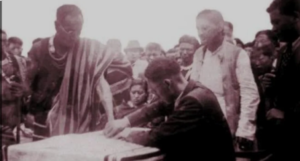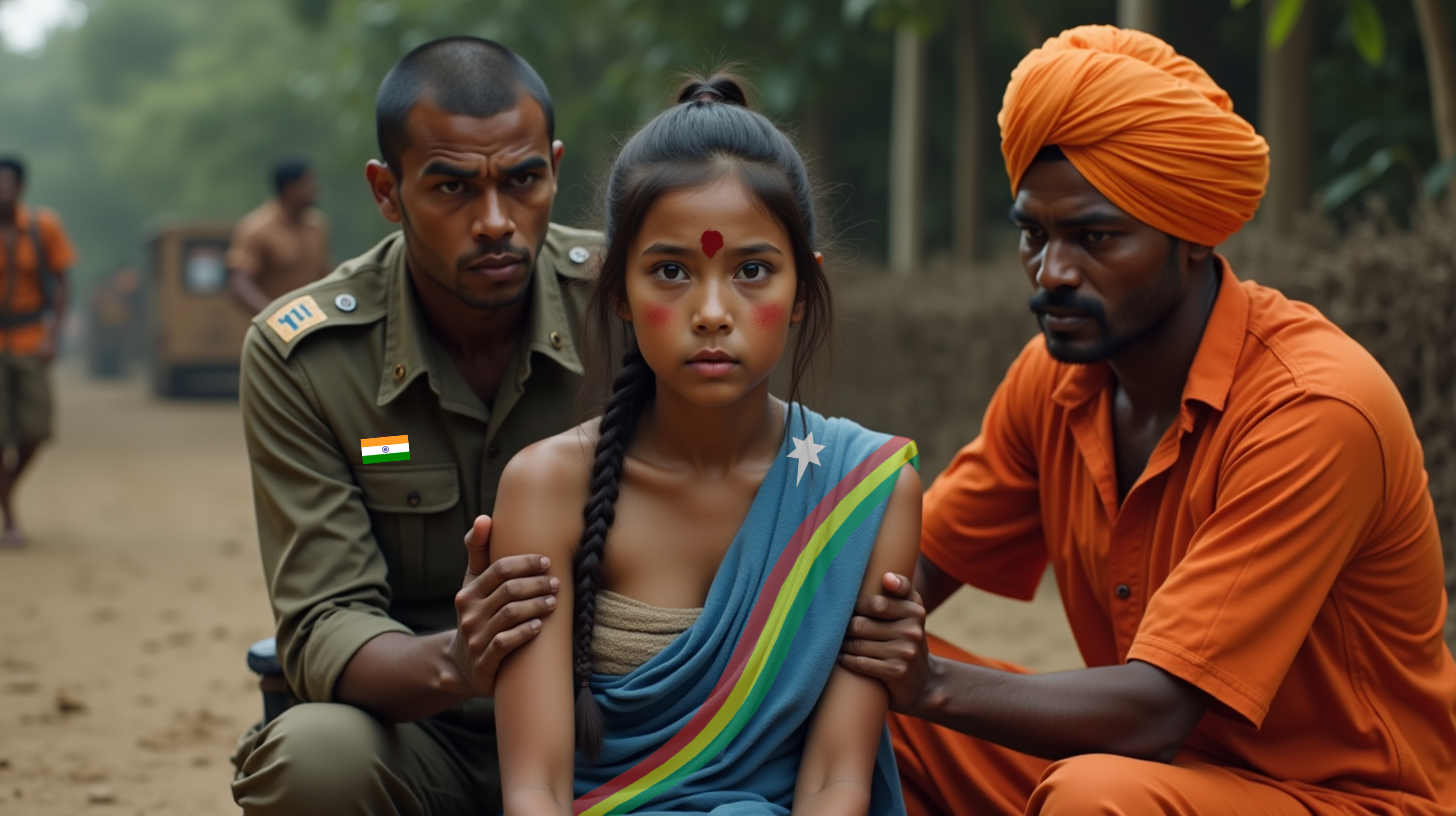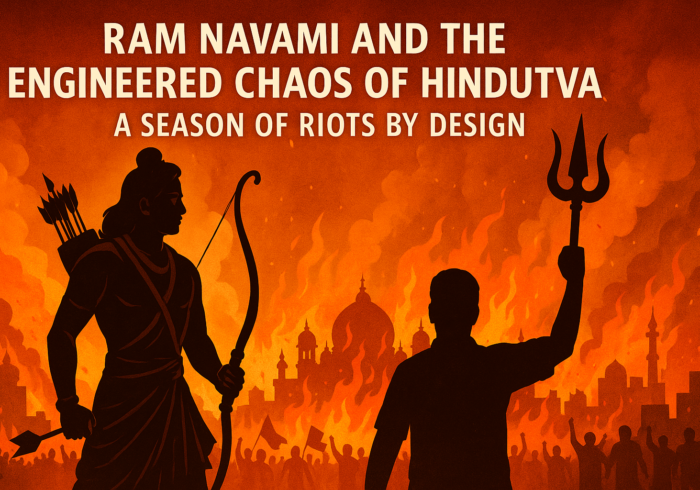When most Indians hear about the Indo-Naga conflict, they assume it’s another “secessionist” movement—yet one of the longest-running in the region. But to many Nagas, especially those who draw strength from the historic 1951 Naga Plebiscite, this is not a case of secession from India. It is a case of independence from an occupation that they never consented to in the first place.
This distinction between secession and independence is critical to understanding the decades-old conflict between the Indian state and the Naga people.
A Nation Before a Nation

To many Nagas, the idea of India as a unified nation-state is a modern political construct, one that did not exist until the British consolidated the subcontinent under one colonial umbrella. Prior to that, the Naga people lived in a system of sovereign village-states with their own languages, laws, and customs. These were not tribal fragments of a greater Indian identity—they were, and continue to be, distinct nations in themselves.
As British India moved toward independence in the early 20th century, the Naga Club—an early political expression of Naga will—submitted a memorandum to the Simon Commission in 1929, stating:
“Leave us alone to determine for ourselves as in ancient times.”
This wasn’t an idle request. It was a political position repeated, strengthened, and reaffirmed through various stages: the formation of the Naga National Council (NNC) in the 1940s, the Declaration of Naga Independence on 14 August 1947 (a day before India’s own independence), and the 1951 Naga Plebiscite, where an overwhelming 99.9% of Nagas voted for complete independence from India.
Why It Is Not Secession

Secession implies that a territory was once part of a sovereign state and is now seeking to break away. But Nagaland was never constitutionally integrated into the Indian Union by its own consent, say Naga leaders. Instead, what followed was a period of forced annexation, military occupation, and denial of self-rule.
According to Adinno Phizo, President of the NNC and daughter of its founding leader A.Z. Phizo:
“A referendum may be necessary for secession. But our case is not secession. We were never a part of India.”
This is a powerful statement. If India never had a legitimate constitutional mandate over Nagaland, then the political struggle is one of decolonization, not rebellion.
The 1951 Plebiscite – A People’s Oath

Held under the leadership of the NNC, the 1951 Plebiscite was not just a symbolic protest—it was a democratic act. Thumb impressions were collected from Nagas across regions, and 99.9% of them chose independence over joining India. The Indian state refused to acknowledge this outcome, choosing instead to begin military operations in Naga areas.
The Indian response was swift and brutal:
- Deployment of military forces across Naga hills
- Imposition of the Armed Forces Special Powers Act (AFSPA) in 1958
- Documented reports of mass killings, rape, torture, and forced disappearances
Far from integrating Nagas into the “mainstream,” these actions further solidified the perception of India as an occupying power.
Military Occupation and Human Rights Abuses

In response to the plebiscite, the Government of India deployed thousands of troops into Naga-inhabited areas and imposed emergency laws. The most infamous among them was the Armed Forces (Special Powers) Act (AFSPA), passed in 1958, which gave Indian military personnel the authority to shoot on suspicion and arrest without a warrant.
This militarization led to decades of documented human rights abuses:
- Over 1,500 extrajudicial killings in Northeast India between 2000 and 2020 (ACHR report)
- Numerous cases of custodial deaths and torture, often without trial
- Sexual violence against Naga women, including the notorious Oinam incident of 1987, where 27 women were reportedly raped by Indian soldiers
- Burning of villages, forced displacements, and suppression of peaceful protests
These atrocities are not isolated incidents—they are part of a sustained campaign of control. Even today, many villages remain under informal surveillance, and military camps continue to exist in civilian areas.
Far from integrating Nagas into the “mainstream,” these actions further solidified the perception of India as an occupying power.
The International Dimension

Despite sending plebiscite documents to the United Nations and the Indian President, the NNC received no international backing. India’s newly won independence and its position as a post-colonial leader made international powers reluctant to interfere.
Yet, in international law, the right to self-determination remains a recognized principle. For the Nagas, the 1951 plebiscite was a direct exercise of that right, not requiring validation from Delhi or any external power.
The NSCN and the Continuing Legacy

In the 1980s, as the NNC’s influence waned (partly due to the controversial Shillong Accord of 1975), a new group emerged—the National Socialist Council of Nagalim (NSCN). Though ideologically and strategically different, NSCN leaders like Thuingaleng Muivah continue to assert that:
“The Naga struggle is not about breaking away from India. It’s about restoring what was never surrendered.”
Even in their ongoing negotiations with the Indian state, the NSCN (IM) insists on a solution that reflects this historical reality. The Framework Agreement of 2015, signed with the Indian government, vaguely acknowledges the “unique history” of the Nagas—a diplomatic nod to the independence narrative.
Not Just Historical – But Ongoing

Today, the Nagas are still waiting for recognition. The NSCN-IM continues to push for a separate flag, constitution, and integration of Naga areas from other northeastern states. Meanwhile, the Indian government has signed multiple agreements, including with other Naga factions like the NNPGs, creating internal divisions.
Civil society remains vigilant. Human rights groups, student federations, and diaspora networks annually observe Plebiscite Day. The cry for self-determination has not faded—it has evolved.
Conclusion: A Nation’s Unfinished Story

The India-Nagaland conflict is not about secession from a united India. It is about the unfinished decolonization of a nation that declared its independence even before India did. It is about a people who never joined, but were forced into a union they rejected democratically.
Calling it a secessionist movement distorts the truth. The Nagas, through their history, culture, and political assertions, claim nothing more—and nothing less—than what was theirs before India ever existed: freedom.
Until India acknowledges this foundational grievance, any solution will be incomplete. The question is not whether Nagaland should secede from India. The question is: When will India acknowledge that it was never truly theirs to begin with?





